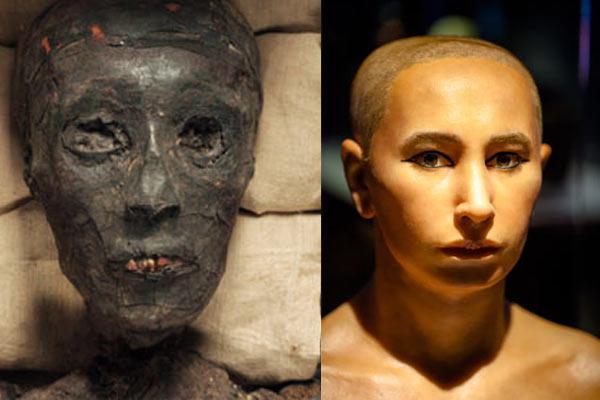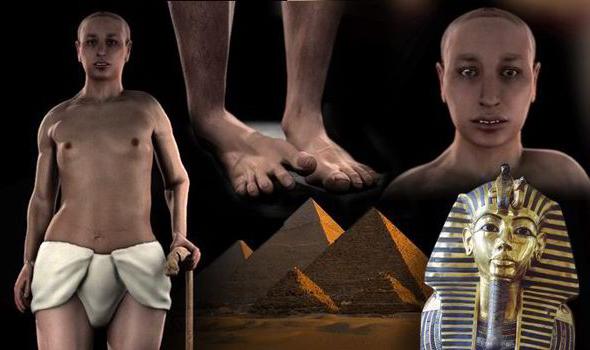The fame of the Egyptian pharaoh Tutankhamun has a truly royal scale. His personality is familiar even to those people who are completely far from the history of the ancient world. The appearance of Tutankhamun is recognizable thanks to the funeral mask and is one of the most famous among the Egyptian rulers. But such popularity was not due to great achievements or deeds, but to the fact that his tomb was the only one of all that retained its original appearance, the hands of the robbers did not touch it, so it appeared to the world in all its splendor.
Find of the century
The tomb of the pharaoh was discovered in 1922 by the American Egyptologist Howard Carter. The find amazed scientists. Such rich decoration has not yet been met. And this is no wonder: all the tombs that were found before that were plundered. Pharaoh was buried in three sarcophagi, the last, in which was a mummified body, made of pure gold. It took more than one month to compile an inventory of all the items that were found. The Egyptians did not spare gold and precious stones for their tombs, believing that all this would be with them in the afterlife. By mask and sarcophagus, the world first saw the appearance of Tutankhamun, which was very attractive.
The existence of the pharaoh was generally questioned; the data on him were so insignificant. On this occasion, G. Carter even said: “With the current state of our knowledge, we can only say with certainty one thing: the only remarkable event in his life was that he died and was buried.”
Curse of the tomb
The year after the opening of the tomb, the man who financed the excavation, D. Carnarvon, died. The official cause of death is pneumonia. But in pursuit of the sensation, the press began to “fan” the story of the curse of the tomb. Subsequently, the death of 22 people was attributed to this mystical fact, of which thirteen were present at the direct opening of the tomb. But in the pursuit of mysticism, many forgot that all members of the research group died at a fairly mature age (an average of 74 years), and G. Carter was the last, violating all logic.
Life and government
Tutankhamun belongs to the 18th dynasty of Egyptian rulers, he reigned only 10 years. It is difficult to establish any kindred ties after millennia have passed. Nevertheless, scientists suggest that he was the son or brother of the previous pharaoh Amenhotep IV (Akhenaten) and at the same time son-in-law. Numerous marriages among close relatives, including between brothers and sisters, have led to frequent genetic abnormalities and diseases. And maybe this leads to the fact that the appearance of Tutankhamun was not so magnificent. He suffered from diseases such as cleft palate, clubfoot, caused by foot bone necrosis (Köhler syndrome). He ascended the throne at the age of 10-12 years, that is, as a child, and in fact the regents ruled for him. The most significant event of his reign is the revival of traditional Egyptian culture, which his predecessor brutally refused. Wall paintings in the tomb indicate that young Tutankhamun took an active part in hunting and military campaigns, including in Nubia. The pharaoh was supposedly killed at the age of 18-19, and the dynasty stopped there. This fact of early death to this day causes many versions and reasons to believe that he was killed.
The riddle of Tutankhamun's death
Back in 1922, many scholars noticed that the ruler of Egypt was buried as if people were in a hurry. The dimensions of the tomb were too tiny and could barely accommodate all the decoration. Even the wall paintings were made with carelessness, there were spots of paint that did not wipe. All this led to the thought of killing Pharaoh. The main version is a blow to the base of the skull, confirmed by its x-ray, where fragments of bone inside the head were visible. Some scholars from Europe believe that the pharaoh died of gangrene, after an injury received during a hunt. In 2010, this was refuted. Tomography of the mummy (in 2005) and DNA analysis of the remains not only established the appearance of Tutankhamun, but also confirmed with great certainty that the pharaoh died at the age of 18-19 from severe, complicated malaria, since it was precisely its causative agents that were discovered. A damaged skull is most likely the result of an embalming process. It is impossible to say something with 100% certainty, scientists around the world have not yet come to a consensus.

Tutankhamun's appearance
The mummy has survived to this day in very poor condition. Mr. Carter was forced to separate it in parts from the golden sarcophagus because of the resin that glued it to the walls. The employees hired by the scientist initially separated the skull, and then the rest of the body, violating the integrity of the main joints. But, despite this, decades later, scientists have recreated the appearance of Tutankhamun. Mummy was studied using computed tomography one of the first. Based on the data obtained on the structure of the skull , soft tissues were reconstructed and the appearance of Tutankhamun was recreated. Pharaoh was not handsome, as it turned out, he had quite specific facial features. Elongated skull, protruding lower jaw and malocclusion. The growth was only about 168 cm, and the structure of the skeleton is very fragile. Some scholars attribute to him congenital scoliosis and clubfoot. Most likely, this is the result of incest (the father and mother of the pharaoh are siblings, according to DNA studies). The reconstruction shown in the photo was made by British scientists.

Millennia have passed, science does not stand still and, although scientists recreated the appearance of Tutankhamun, the death of the young pharaoh still excites many and causes heated debate among the most famous Egyptologists of the world, without giving clear answers to numerous disputes.